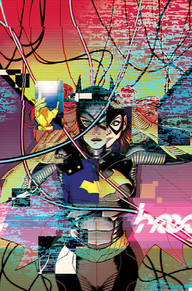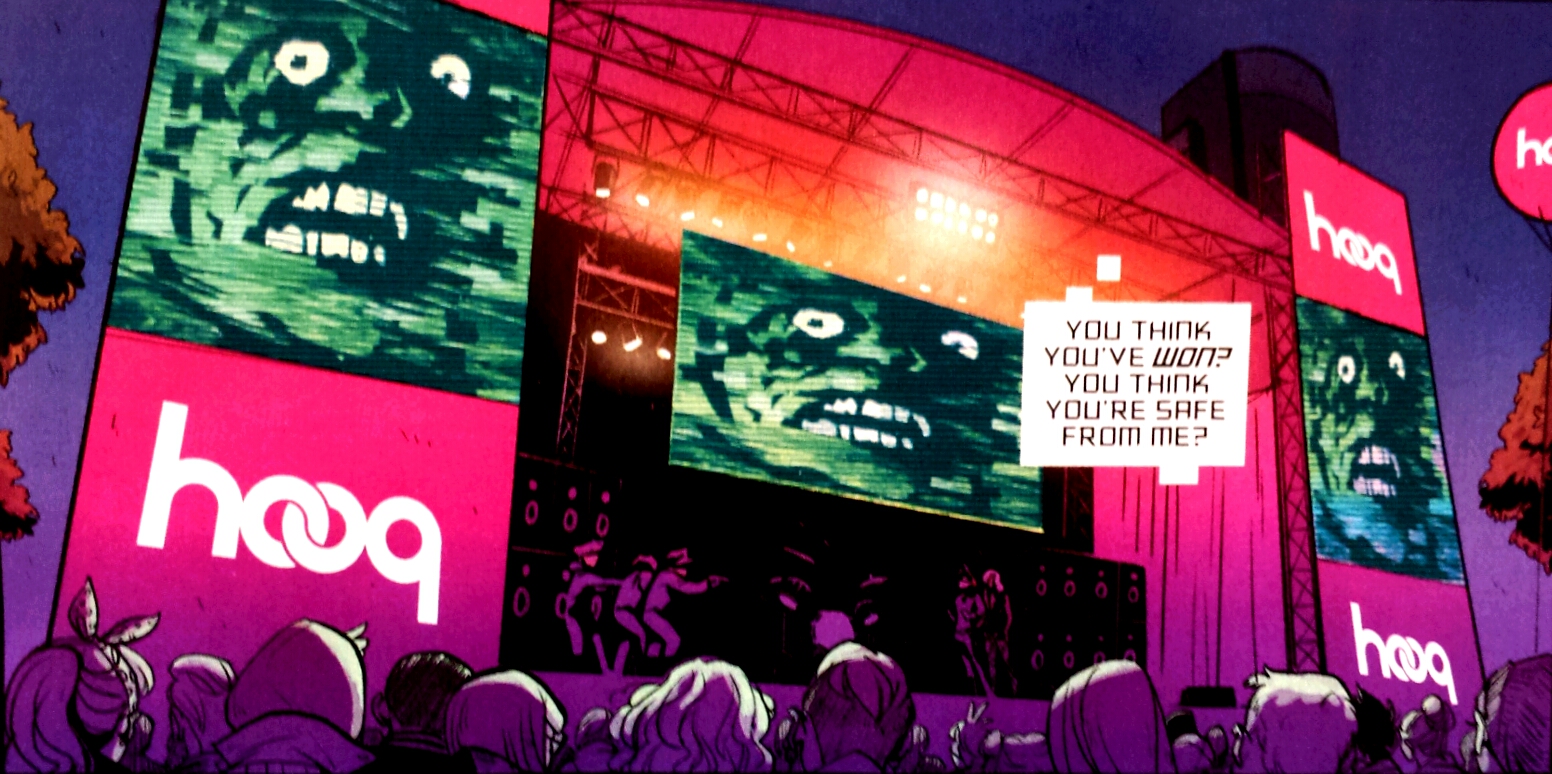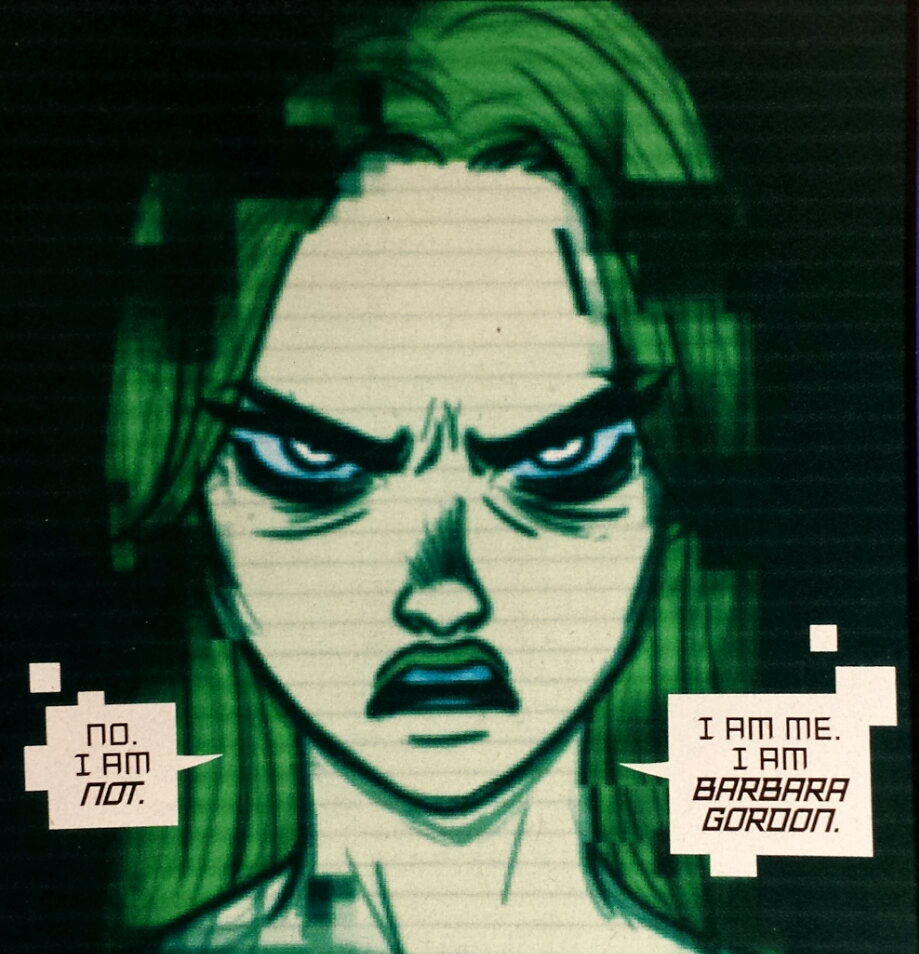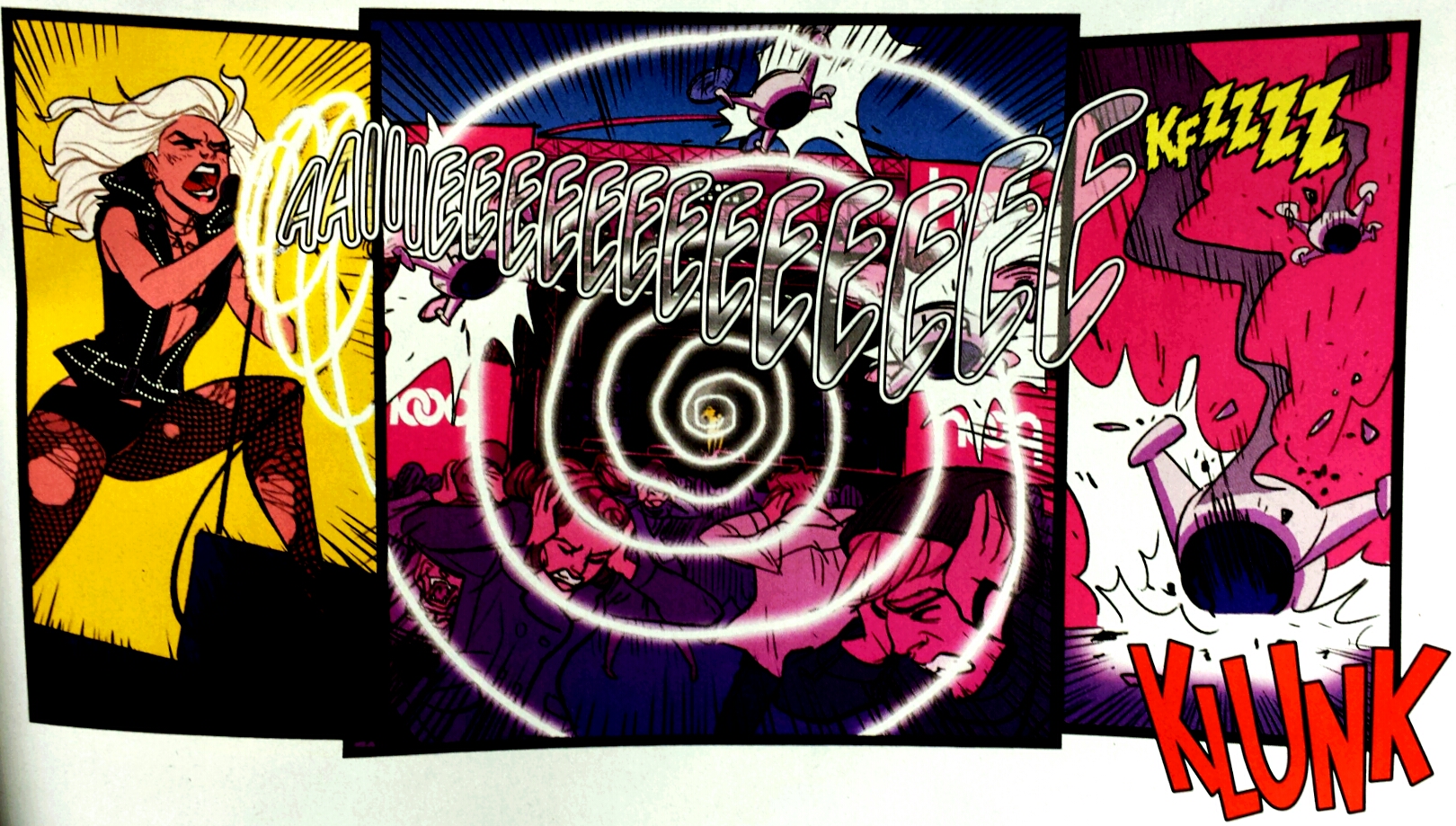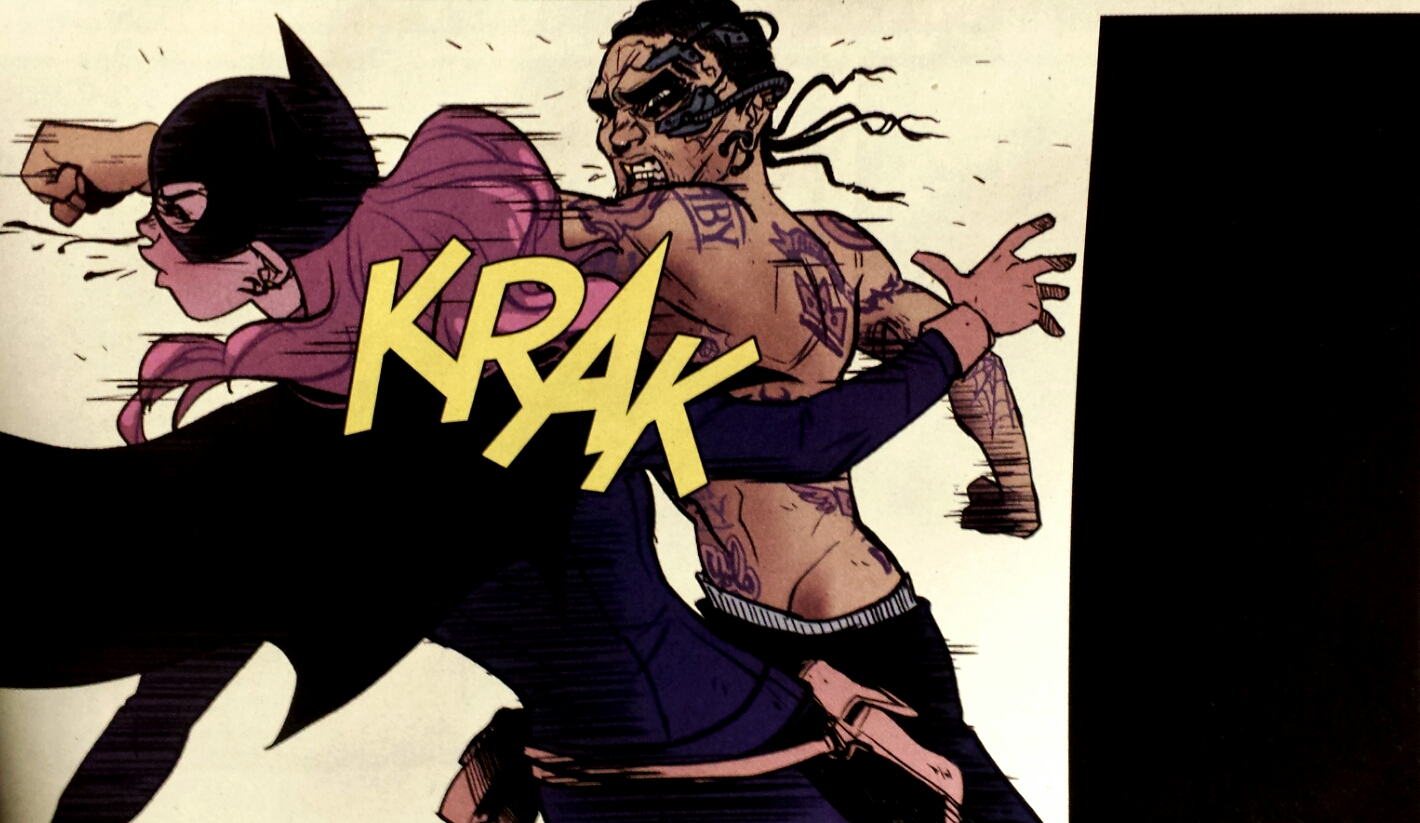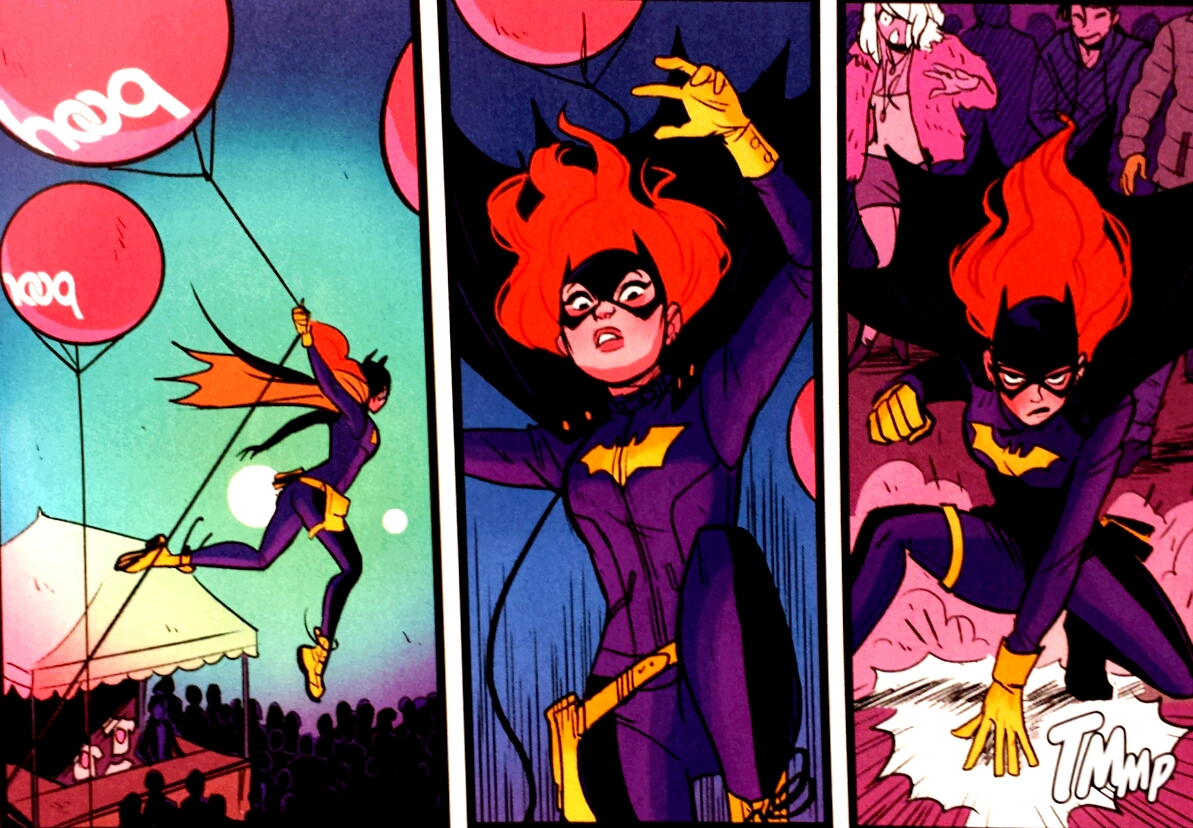Batgirl #40
published 3/18/2015
Written by: Cameron Stewart
Brenden Fletcher
Art by: Babs Tarr
Maris Wicks
Unquestionably the most important part of launching a new series is having the absolute best first issue that can be done. It needs to be polished; the art needs to be the best possible iteration; and the story needs to have clear intrigue, direction, and action. If any of these elements fall short you run the risk of alienating fans before they are even fans. But what about last issues in an arc? Aren’t they important too? Well, let’s see how “Batgirl” #40 fares as it wraps up its first arc.
Ending an arc is important for one reason: payoff. If I, as a fan, traveled down this path, enjoyed this story through its twists and turns, it’s nice to know that it means something. Weak books will end a story with a throwaway McGuffin simply because they are required to tie up loose ends. A good book will instead use the opportunity to showcase the strengths of that character, to show that only this one particular character could have resolved the situation. “Batgirl” did a really good job of this throughout the series because it relayed the plot points that Barbara would later use in the climactic fight.
First, a spoiler warning. So we find out that this mysterious antagonist that has been sabotaging Barbara since she got to Burnside is actually her own algorithm which has become sentient and wants to make Gotham safe by killing all the humans inside of it—so yes she invented Ultron, Barbara Gordon is DC universe’s Hank Pym. And while this idea isn’t very original, it uses that standard troupe to have fun, be action packed and play more with the climactic fight than wrestling with the implication of creating artificial life. This story also allows for showcasing how only Barbara Gordon herself could stop such a terrible villain. It starts with the help she enlists.
First she calls her friend Qadir Ali and is able to discern a takedown method for some drones—a method which involves a sound set at a particular pitch and frequency. Cue Black Canary. Then, her hacker friend Frankie is able to reveal all the nasty details of the plan to the public which helps buy time. The thing is, the book already went to great lengths to set up this network of aid before the last issue ever hit shelves. All of these people are believable in their role. And what’s more? It feels rewarding to watch these characters gradually fall into place and help piece together the solution. Yeah sure, we could have read page after page of Barbra punching robot ninjas and gotten some gratification but this way feels like it provides substance and meaning. That isn’t to say there wasn’t any punching because there was punches for days.
The end action of this issue was spectacular. From fun punch ups with a super cyborg, to running and jumping out of buildings, to taking down a sky full of drones; this issue was packed to the gills with action. And it was clean action. I don’t mean that it was free of gore, what I mean was that I could tell exactly what was going on the whole time. A lot of books in order to be epic and climactic pack the pages with fights and explosions only to have the main action lost in the spectacle. “Batgirl” doesn’t have that problem. At all times I could tell where Barbara was and what she was doing, I could see the plot advance and I wasn’t confused as to who was doing what.
Let’s compare two like issues, “Batgirl” #40 and the issue of “Invincible” where Mark fights Dinosaurus in Las Vegas. Now these two fights have completely different outcomes but their formulas are pretty similar. Both of the villains have an intimate knowledge of the hero, both plans call for widespread devastation and death, and both plans are being enacted for the “Good” of the people. It is also a little imbalanced because Mark actually had a physical villain he could punch around whereas Barbra had to verbally smack down a line of code. But, in Mark’s battle, the fight quickly shifted to saving as many people as he could since there was no stopping the bombs. In that way, both of their goals became aligned. The end product needed to be as few human casualties as possible. Mark shone in this moment because while he was unable to save all of Las Vegas, he made every effort to save as many as possible. Barbara had her moment as well because she had to use logic to disarm what was essentially a train of logic. In this way these stories show the strengths of these characters built by the foundations of their previous adventures.

